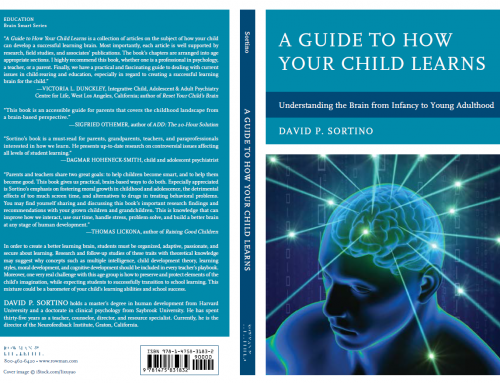With the school year in full force it would make sense to eliminate some common myths about your student’s learning brain.
Myth Number One: According to brain researchers most attempts to motivate students to “try harder” do not light up unused neural circuits; academic achievement does not improve by simply running up a neural volume switch (Tokuhama-Espinosa, 2010). Instead, researchers advocate that effective learning should be similar to the experience of the long distance runner: steady, consistent, etc. In other words, “cramming,” aka, “trying hard” often backfires. Instead students should employ a strategy called “distributive practice” for better results, (Dunlosky, et al, 2014). Distributive practice suggests that students should spread out study time or learning to support greater retention, which feeds into working memory and executive thinking.
Myth Number Two: Left and right brain students learn differently. Brain scientists believe a purely rational left-brain and/or artistic right brain is considered a fable. We use both sides of our brain for all cognitive functions. One of the most complex brain activities students will be asked to learn is reading mastery, which touches multiple areas of the brain. First, visual processing begins when the eyes scan the letters of the printed word and the visual signals travel to the occipital lobes located in the back of the head. The word signals are decoded in an area on the left side of the temporal lobe, which separates it into basic sounds (phonemes). The auditory processing system sounds out the phonemes in the head and the frontal lobe provides the meaning. Again, to identify a child as purely right or left-brain does not do justice to the 100 billion neurons located in all portions of a student’s brain.
Myth Number Three: You should speak only one language first before learning another language. This could confuse one language over another causing language to develop slowly? Different areas of the brain do not compete for resources. Children who learn two languages simultaneously gain better-generalized knowledge of language structure as a whole.
Myth Number Four: Male and female brains differ in function which then dictates different learning abilities? According to brain researcher, Tracy Tokuhama-Espinosa, “the distinctive physiology may result in differences in the way their brains function. No research has demonstrated gender specific differences in how networks of neurons become connected when we learn new skills.” Further, if gender differences do appear, they are likely small and based on averages that will not be relevant to any specific individual.
A final myth is that each child has a particular learning style but specific learning styles has not been validated in actual studies (Mind, Brain, and Education Science 2014). A child may appear to exhibit skills at one time of his life, but three or four years later that same skill may be judged as a weakness. The reasons are complex, but the important thing to know is that a child’s strengths and weaknesses are not carved in stone. As time passes, the way a child learns best may change significantly. Neuroscientist Dr. Uta Frith urges parents and educators to tread cautiously: “there is a huge demand by the general public to have information about neuroscience for education. There is an enormous supply of untested, untried and not very scientific methods.”
David Sortino Ph.D., a Graton resident, is director of The Neurofeedback Institute: Go to his blog and/or email him:neurofeedbackinstitute.blogspot.com


